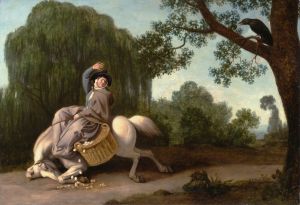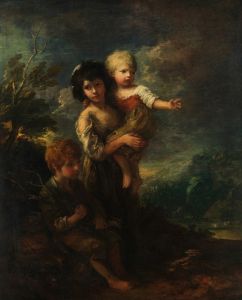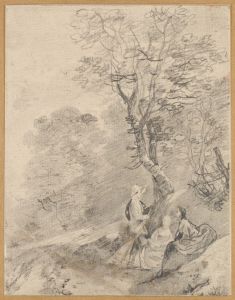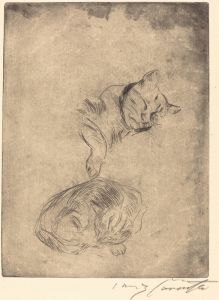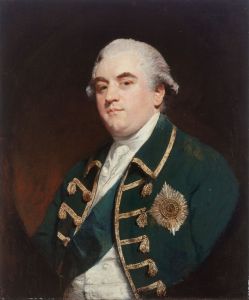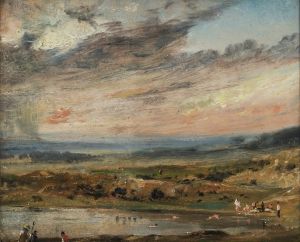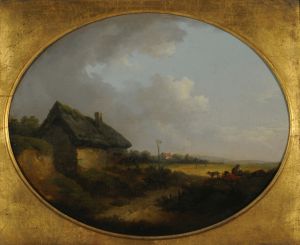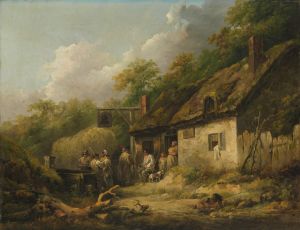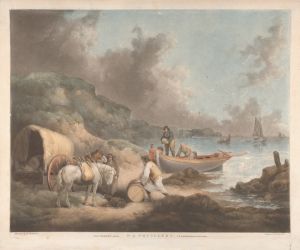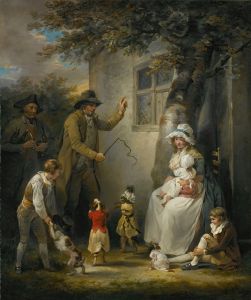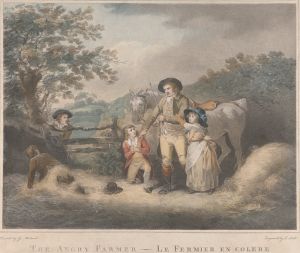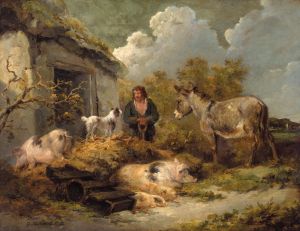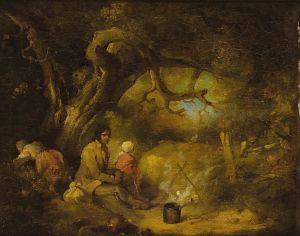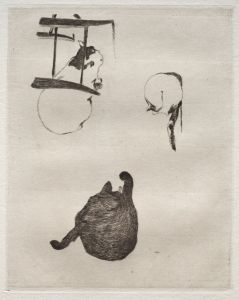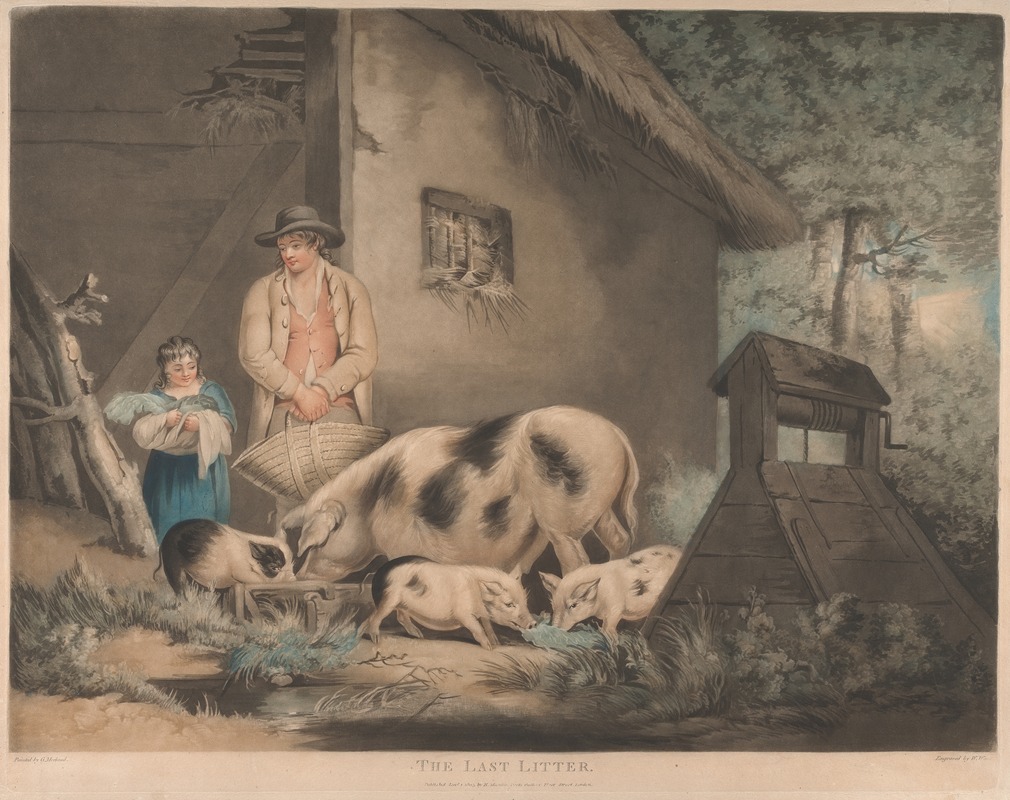
The Last Litter
A hand-painted replica of George Morland’s masterpiece The Last Litter, meticulously crafted by professional artists to capture the true essence of the original. Each piece is created with museum-quality canvas and rare mineral pigments, carefully painted by experienced artists with delicate brushstrokes and rich, layered colors to perfectly recreate the texture of the original artwork. Unlike machine-printed reproductions, this hand-painted version brings the painting to life, infused with the artist’s emotions and skill in every stroke. Whether for personal collection or home decoration, it instantly elevates the artistic atmosphere of any space.
George Morland was an English painter known for his rustic and rural scenes, often depicting animals and country life. One of his notable works is "The Last Litter," which exemplifies his skill in capturing the essence of rural England during the late 18th century. Morland was born in London in 1763 and was the son of the artist Henry Robert Morland. He showed artistic promise from a young age and was apprenticed to his father, who was also a painter and engraver.
"The Last Litter" is a painting that reflects Morland's fascination with rural themes and his ability to portray animals with a sense of realism and empathy. Although specific details about the painting's creation and its current location are not widely documented, it is consistent with Morland's typical subject matter, which often included farm animals, rustic landscapes, and scenes of everyday life in the countryside.
Morland's work is characterized by its naturalistic style and attention to detail. He had a unique ability to capture the textures of fur and feathers, as well as the play of light and shadow in outdoor settings. This made his animal paintings particularly popular during his lifetime. "The Last Litter" likely features a scene involving animals, possibly pigs or dogs, as these were common subjects in his oeuvre.
Throughout his career, Morland was known for his prolific output and his ability to produce paintings quickly. He often worked on commission and sold his paintings to dealers and collectors who appreciated his depictions of rural life. Despite his success, Morland's personal life was troubled by financial difficulties and a reputation for reckless behavior, which ultimately affected his career and health.
Morland's paintings, including "The Last Litter," are appreciated for their charm and the way they capture the simplicity and beauty of rural life. His work provides a window into the 18th-century English countryside, offering insights into the social and cultural aspects of the time. Morland's ability to convey emotion and character in his animal subjects has contributed to his lasting legacy in the art world.
Today, George Morland is remembered as an important figure in British art history, and his works are held in various collections, including museums and galleries. His paintings continue to be studied and admired for their technical skill and their portrayal of a bygone era. While specific information about "The Last Litter" may be limited, it remains a testament to Morland's talent and his contribution to the genre of animal and rural painting.





